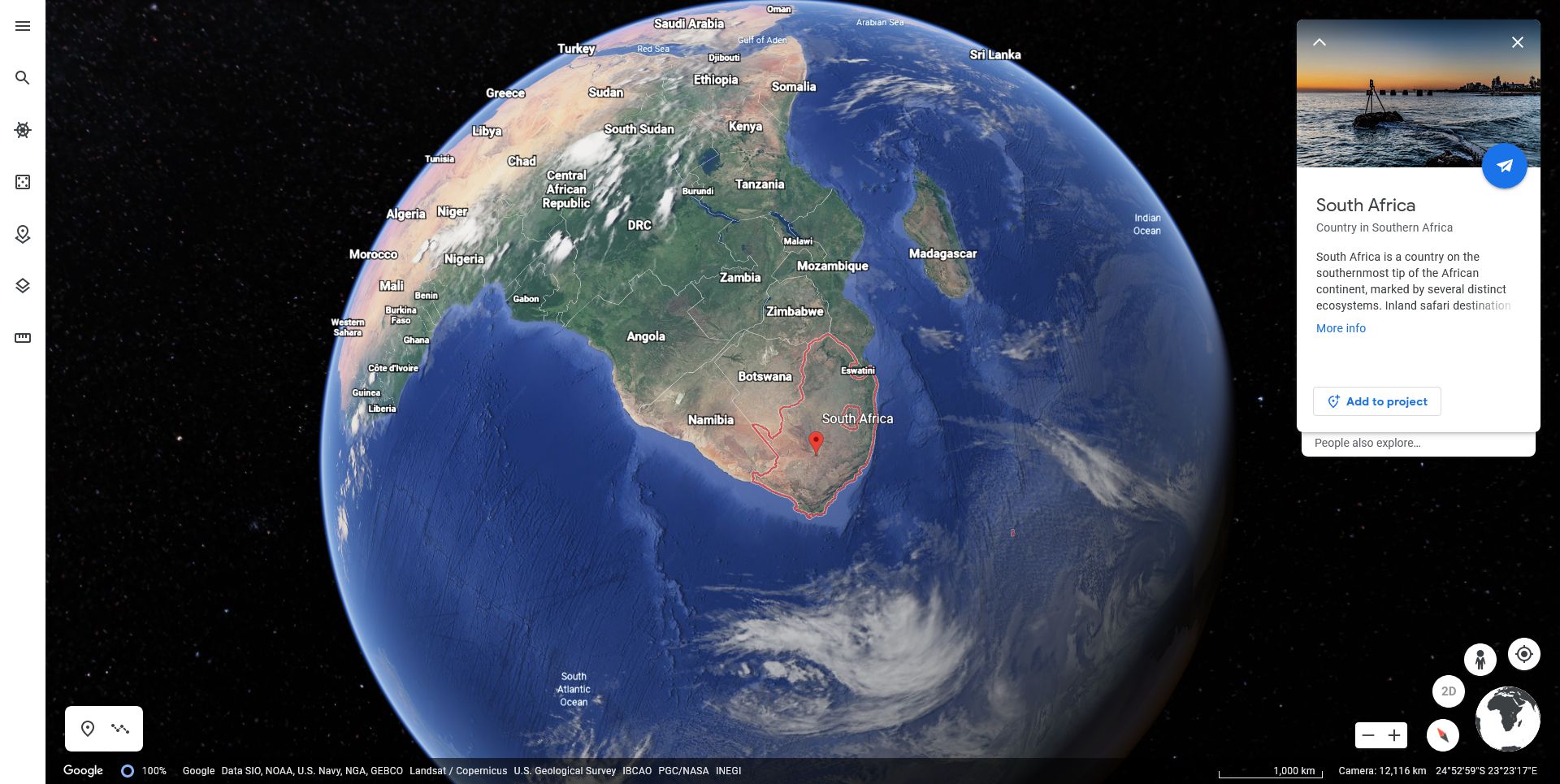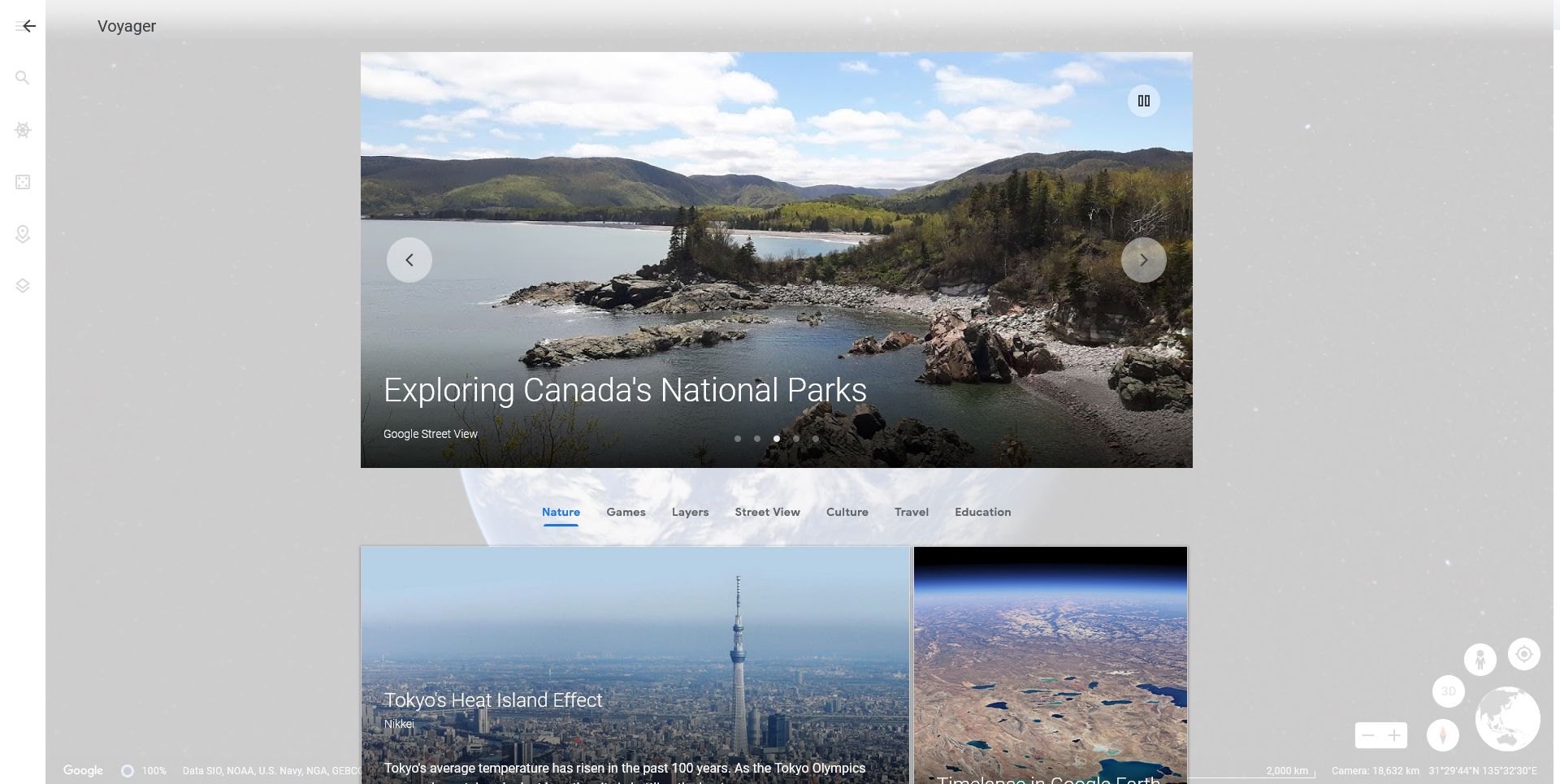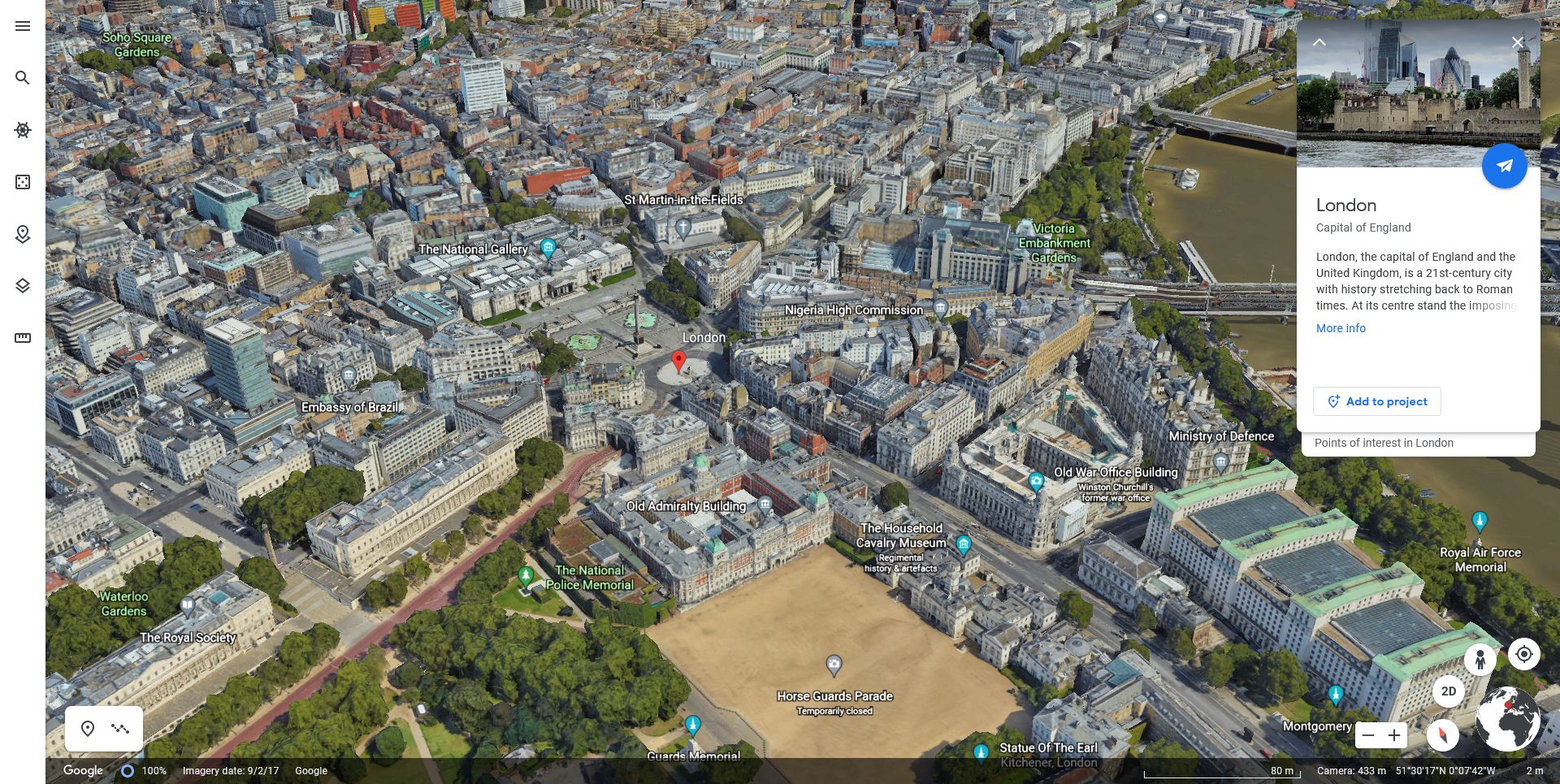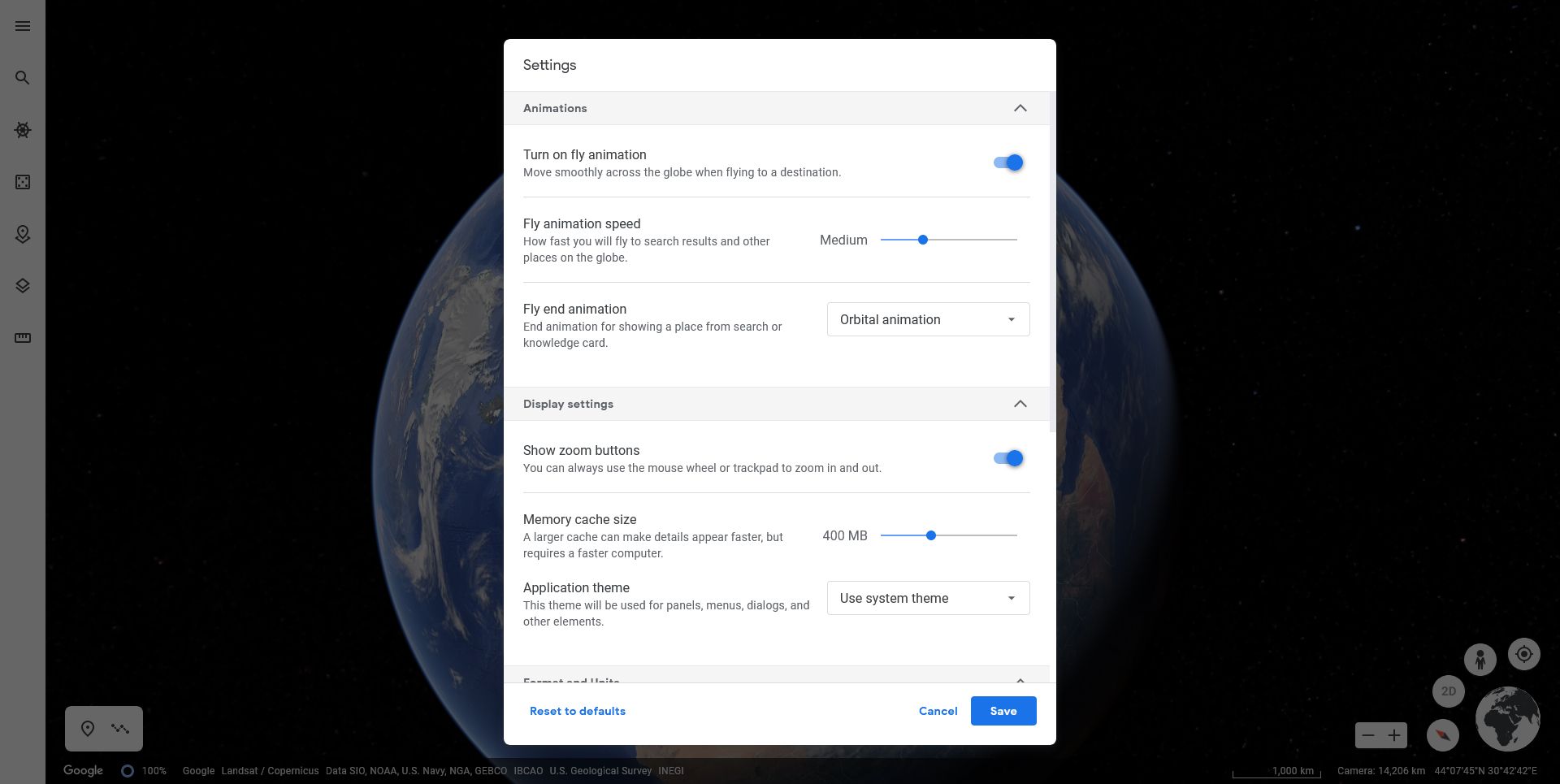Google Earth is a fantastic tool that lets you explore the world from the comfort of your home. While it's available as a desktop and mobile app, you can actually use Google Earth directly within your web browser.
We're going to show you how to use Google Earth online without downloading it, then highlight some of its best features.
How to Use Google Earth in a Browser
Accessing Google Earth in your browser is incredibly simple. It's great because you don't have to download anything, and you can use it on any computer. Just go to google.com/earth.
At first, Google Earth was only available via the company's own Chrome browser. However, as of March 2020, it's accessible in more browsers like Firefox, Opera, and Edge.
You need to enable hardware acceleration in your browser before using Google Earth. It's likely that this is already enabled.
To double check in Chrome:
- Input chrome://settings/ into the address bar.
- Select System.
- Enable Use hardware acceleration when available.
How to Navigate Google Earth in a Browser
You might feel a tad overwhelmed when you first launch Google Earth, looking at the entire globe.
To begin, click and drag the globe to spin it. Hold Shift at the same time to tilt. Next, scroll your mouse wheel to zoom in and out (alternatively, use the plus and minus icons in the bottom-right.)
As you get closer to the Earth, you'll see the names of countries appear. Click these to open an information box about that location, which you can also click to expand. This same functionality applies at a local level for things like cities, landmarks, and parks.
To go somewhere specific, click the search icon on the left. You can search by place name, address, longitude and latitude, and more generally (e.g., "Museums in Paris"). Of course, you'll probably want to get a satellite view of your house on Google Earth.
Keyboard Shortcuts for Google Earth in a Browser
When you become more familiar with Google Earth, try using keyboard shortcuts to navigate quicker. Here are some of the most useful:
- ? - Show a list of keyboard shortcuts
- / - Search
- Page up/down - Zoom in/out
- Arrow keys - Pan view
- Shift + arrow keys - Rotate view
- O - Move between 2D and 3D view
- R - Reset view
- Space - Stop movement
If you find these handy, check out our keyboard shortcuts for Google Maps.
The Best Google Earth Browser Features
Google Earth is packed full of great features. Here are some of the best that you should try.
1. Take a Virtual Tour With Voyager
Voyager is the name of a feature that lets you go on virtual tours. Google dubs them as "map-based stories", in which you explore locations and discover information at your own rate.
There are plenty of interesting Voyager tours to experience, including India's railways and the history of volcanoes. There are also interactive quizzes for you to test your knowledge on topics like animal calls and archaeological sites.
To access Voyager, click the helm icon on the left and select a tour from the overlay.
2. Explore the World in 3D
While it's all well and good exploring the planet in a flat view from above, Google Earth goes one step further and lets you check things out in 3D.
To activate this feature, click the Map Style icon on the left and enable Turn on 3D Buildings. While you're here, you might also like to enable the cool Turn on Animated Clouds feature.
3D isn't available everywhere—only where Google has captured the high-detail imagery necessary. It's more likely to be available in high population areas or for notable landmarks.
To view somewhere in 3D, hold down Shift and click and drag to change the perspective. If you ever want to quickly switch back and forth between 3D and 2D, press the O key. Alternatively, click the 3D button in the bottom right (click again to change back to 2D.)
3. Create a Project
Projects are a way to collect together locations, alongside text, photos, and videos, to build a presentation, story, or customized map.
To begin, click the Projects icon on the left, then New project > Create project in Google Drive. You'll need to sign in to your Google account if you're not already. Click Untitled Project to input a name for your project (and add a description too if desired.)
Next, click New feature and choose from options like Search to add place, Add placemark, Draw line or shape, and Fullscreen slide. Experiment with these features because it's easy to add and remove them.
You can also put things in your project as you explore Google Earth—click the Add to project button that appears in the information boxes.
How to Change Google Earth Settings
You might want to customize your Google Earth settings to tweak animations, adjust unit measurements, and more.
To do this, click the menu icon on the left and select Settings. The settings are split by the headings Animations, Display settings, Format and Units, and General settings.
Explore these settings and adjust to your liking. Here are some tips:
- If your computer is struggling to display Google Earth correctly, disable Turn on fly animation and reduce the Memory cache size.
- Google automatically determines your preferred format and units by your location. However, you can manually change both the Units of measurement and Latitude/Longitude formatting.
- If you ever change the settings and want them to go back to how they first were, click Reset to defaults at the bottom of the window.
How Recent Is Google Earth's Imagery?
Now you know how to use Google Earth in your browser, it's time to get exploring every nook and cranny that our beautiful planet has to offer.
You might also be wondering how often Google Earth gets updated. Simply look at the bottom information bar to see when the images you're viewing were captured. The more significant a location is, the more chance it has of being updated regularly.





